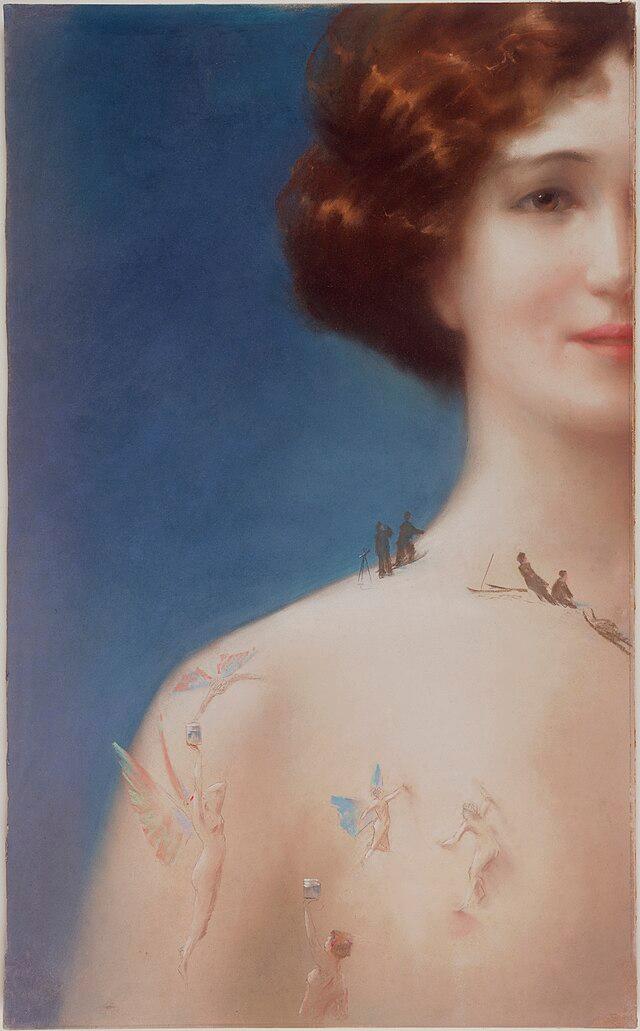For the first issue of global skincare through a historical context we are going to zone in on the differences of skincare around the world to set a basic understanding of the various techniques and standards. We are specifically going to compare skin care practices from the United States, France, and South Korea. All three countries have a wide market of products that work towards improving the skin to fit the beauty standard of each respective country which is determined by both societal and cultural expectations. When deciding a skincare routine, understanding the various options one has from different countries can assist in finding products that fit with what you are looking for.
The French beauty standard often centers around working towards a natural look. Skin Care products and makeup work to enhance the various features of one's face and embrace the look, rather than attempting to subtly change it. The French push the concept of both self-love and self-acceptance of one's appearance, instead of striving for a “perfect” look. Makeup is used at a minimal level, and people tend to stray away from surgeries that permanently alter one's appearance. Similar to South Korea, adding a skincare routine is often introduced at a young age to begin working towards a long term result. The skincare routine itself is simple and does not include as many steps compared to Korea or the United States. The French stick to using a consistent routine, instead of trying out new products as they continue to make their way onto the market. Furthermore, the products themselves tend to be more expensive compared to the United States but include less ingredients. Typically, a skincare routine will focus on removing impurities, through the use of micellar water or a milk cleanser. The French also put heavy emphasis on consistent hydration. The most notable skincare brands include La Roche-Posay, Vichy, Caudalie, and Bioderma.
The United States’ has a more aggressive beauty standard in which people strive to attain a perfect and flawless look. Makeup is used to cover and “fix” features that are outside of what are considered attractive. The United State’s tends to have a eurocentric beauty standard, in which features such as a small nose, blonde hair, and fair skin. However, in recent media people of color have actively fought against this unfair eurocentric standard, and have enacted measures to change this beauty standard and work towards accepting and celebrating one’s own unique features. Still, many Americans undergo surgical procedures to permanently alter aspects of their appearance, most notably the use of botox. The beauty standard also enforces the concept of clear skin with no acne, and skincare routines are often aggressive and work towards instant results. Routines themselves vary depending on the person, but typically include a harsh scrub to clean the skin and remove oils. Acne products in the US tend to dry out the skin and damage the skin barrier, in an attempt to remove the visible pimple. This portrays one example of the strive for instant results, as it may cause the pimple to go away but also can further increase the development of more acne. Dermatologists tend to prescribe medication to combat acne, specifically products such as accutane and Ortho Tri-Cyclen. The most notable skincare brands on the US market include Cerave, the Ordinary, Glossier, and Cetaphil.
The South Korean beauty standard focuses on a fair and clear complexion. Skincare routines tend to be intense, including a combination of numerous different products. Skincare is introduced at a very young age to maintain a young complexion when one begins to age. The beauty standard can be linked back to Cunfucion philosophy of the 5th century BCE. The ideology was that beauty was linked to one's purity and wants in life. Furthermore, the strive for a porcelain skin like complexion was initiated during the period of class identification. If one had darker skin it was an indicator for being a part of the lower class. This ideology has remained as society progressed, and is also very prominent in many other Asian countries. South Koreans put heavy emphasis on applying sunscreen throughout the day to prevent sun damage. Furthermore, skin care products work to remove dead skin cells and other substances on the skin and to maintain a hydrated skin barrier. Furthermore, plastic surgery plays a prominent role in the beauty standard and is even more popular compared to the United States, as people try to change their features to fit the beauty standard ideals such as a pointed nose, large lips, and double eyelids.The most notable South Korean skin care products include Lanegie, Cosrx, Soon Skincare, and the beauty of Joseon.
These were just three examples of different beauty standard ideals and skincare routines created to fit them. All three countries had differing perspectives on what beauty is, and created products to fit that market. This was a short delve into the differences and overall skincare routine, but hopefully provides insight on a few different ways to construct your skincare routine.
Sources
https://www.eviemagazine.com/post/beauty-standards-around-the-world-france
https://camillestyles.com/beauty/french-skincare-brands/
https://www.artefactmagazine.com/2017/11/02/why-do-south-koreans-want-white-skin/
